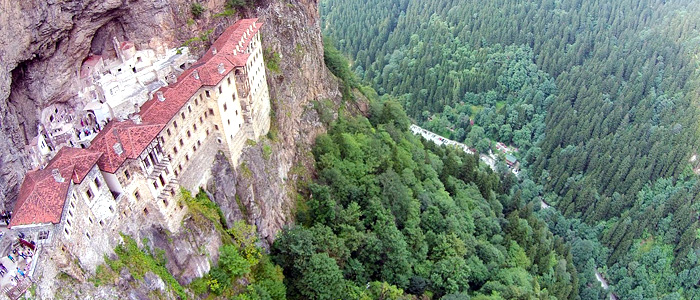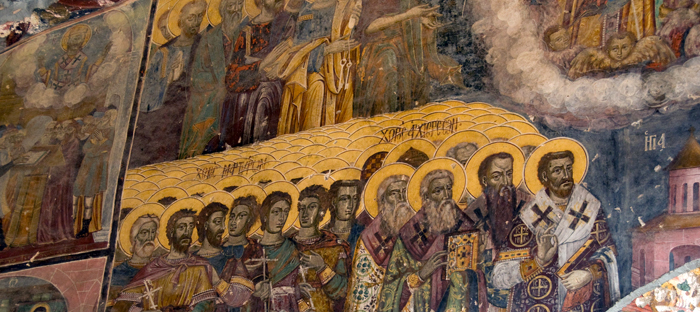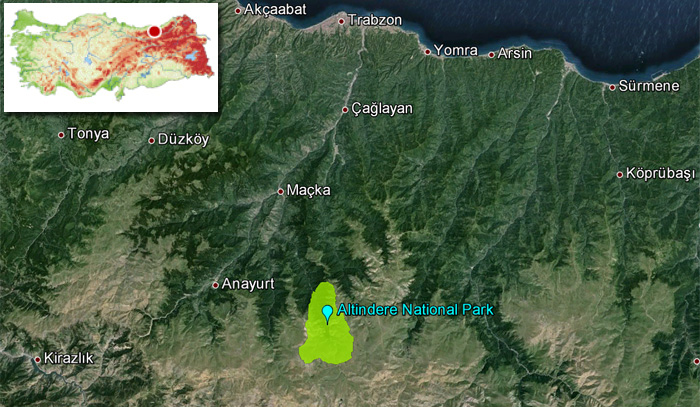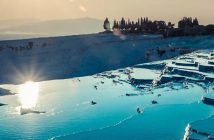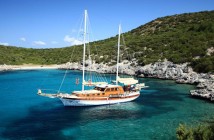The Altindere National Park is the best known park in the Black Sea region, and lies to the west of Trabzon in Turkey. The Sumela (Sümela) Monastery is one of the main sites of the Altindere National Park. Also known as Meryemana, because it was dedicated to the Virgin Mary and was the centre of Christianity in the region. The Sumela Monastery is a Greek Orthodox monastery. It also has a very significant place in the history of art. It is thought that the monastery was constructed in the 4th century, although Alexios III, (1349 – 1390) can be named as the real founder. It was extended in the 19th century, at a time when it enjoyed its most popular period. The national park can be reached via the 48 km road connecting Trabzon to Macka.
National parks are among the ways of protecting nature and culture. Altindere Valley National Park was turned into a national park in 1987. The total area of the national park, 901 hectares of which is forest, is 4800 hectares.
The entrance of national park is via a narrow and long staircase, and consists of water canals, library, kitchen, guest rooms, cisterns, and the pool in which holy water was collected. The building clings dramatically to the sheer rock wall, overlooking mountain forests and mountain springs.
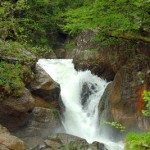 The flora in Altindere National Park is very rich, the dominant species being the Eastern spruce tree. Fir trees, Scotch pine, chestnut, oak, lime tree, willow, black pine, Caucasian honeysuckle, and forest rose all cover the area.
The flora in Altindere National Park is very rich, the dominant species being the Eastern spruce tree. Fir trees, Scotch pine, chestnut, oak, lime tree, willow, black pine, Caucasian honeysuckle, and forest rose all cover the area.
The main species of animal are deer, roe deer, wild goats, wild boar, bears, wolves, jackals, foxes, and lynx, some of which owe their survival to the local flora.
Most people visit between April and October, for trekking and to visit the monastery of Sumela. There are tourist bungalows in specific areas of the national park which can be reserved through the Office.
The Sumela (Sümela) Monastery
The ruins of a monastery can be seen on the slopes of the Zigana Mountains to the south of Trabzon. The Sumela monastery is inside the Altindere National Park surrounded by a beautiful forest and at the bottom of the mountain flows one of the arms of Degirmendere Creek.
The vehicles can reach up to the parking lot at the 950 meters height near to the river, and from that point one needs to hike uphill through the path way approximately 1 km to reach the entrance of the monastery which is located at an attitude of 1200 meters from the sea level.
According to tradition the monastery was founded by Barnabas and Sophranius, two Athenian priests who visited the region during the reign of Theodosius I. Legend has it that the icon of the Virgin Mary, believed to have been the work of Saint Luke, was carried to the Zigana Mountains of Trabzon by angels, only to be discovered by Barnabas and Sophranius on their journey from Athens to the region. It is this icon of the Virgin Mary, arguable
Whilst much of the artwork and frescoes have deteriorated beyond recognition, there are examples of Turkish artwork on exhibition in the courtyard and surrounding buildings, including examples of cupboards, fireplaces and other furniture. Manuscripts, books and documents found at the monastery have since been catalogued and are now on display at the Ankara Museum and the Ayasofya museum in Istanbul. Valuable items such as plates and crosses from the monastery are on display at the Museum of Byzantine Works in Athens, and the Icon, ‘Our Lady of the Roses’ is on display in the National Gallery in Dublin.
It is said that “Sumela” (the Greek name of this monastery, founded in the name the Virgin Mary), comes from the word “melas”, which means “dark” or “black”. Many consider that this stems from the dark hues of the mountain valley in which the Monastery is situated. However, in the opinion of the author the word “sumela” could be an adjective used to refer to the icon of the Virgin Mary. The colour of the icon, which is so dark that it could be described as black, was one of the things that struck the eminent historian J.P Fallmerayer (1790-1861) when he visited the Monastery in 1840 and could well be the origin of the name.
The Healing Waters Of The Sumela Meryemana Monastery (The Monastery Of The Virgin Mary)
Into a sacred pool in the centre of the Monastery large drops of water drip at irregular intervals from thirty or forty metres above. It is these drops of water which have offered hope to sufferers of incurable ailments over the centuries and made the Monastery rich. In the old days both Christians and Muslims came here from far and wide to take the cure, first offering impressive gifts and sacrifices.
On 15 August 2010, with the permission of Turkish Government, an Orthodox Mass was held for the first time at Sumela monastery since 1923.

